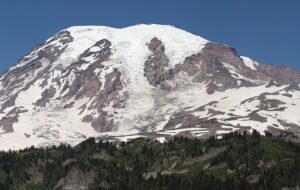The Sphinx snow patch on Braeriach in the Scottish Highlands has melted for the fourth year in a row. This is the only 11th time the famous snow patch has melted since the 1700s.
Braeriach is the third-highest mountain in the Cairngorms. The Sphinx sits within a coire — a glacial hollow from the last Ice Age. Because of this and its presence for hundreds of years, many consider it a remnant of the last Ice Age.
Over the previous 20 years, Iain Cameron — Scotland’s foremost snow patch expert — has been monitoring the patch. He says it is a “barometer for climate change.”
This is the first time the patch has melted for the fourth year in a row in over 200 years. The Scottish Mountaineering Club recorded the first full melt in 1933. Over the next seven decades, it disappeared only occasionally. Since 2003, it has vanished eight times.
A sad day today. The Sphinx will melt in the early hours of tomorrow morning, meaning that’s the fourth consecutive year it has done so.
This patch was once considered permanent. It has now melted completely since the 1700s in the following years:
1933
1959
1996
2003
2006
2017… pic.twitter.com/yV5T9yulA4— Iain Cameron (@theiaincameron) October 3, 2024
Cameron blames the scarcity of western-facing storms from the Atlantic. “There’s not as much snow falling in winter,” he explains. “Precipitation is mostly rain.”
He visited the ice patch last Thursday. It measured a mere 0.5 meters wide and was gone by the following morning. In snowier decades, the patch was up to 50 meters in diameter.
“I feel both saddened and alarmed,” he says. “I’m so used to seeing them year after year that it’s hard to see them vanish so often. It’s like visiting an elderly relative.”
In his 2021 book, The Vanishing Ice, Cameron explores elusive snow patches around the UK. He believes they might soon be a thing of the past.






